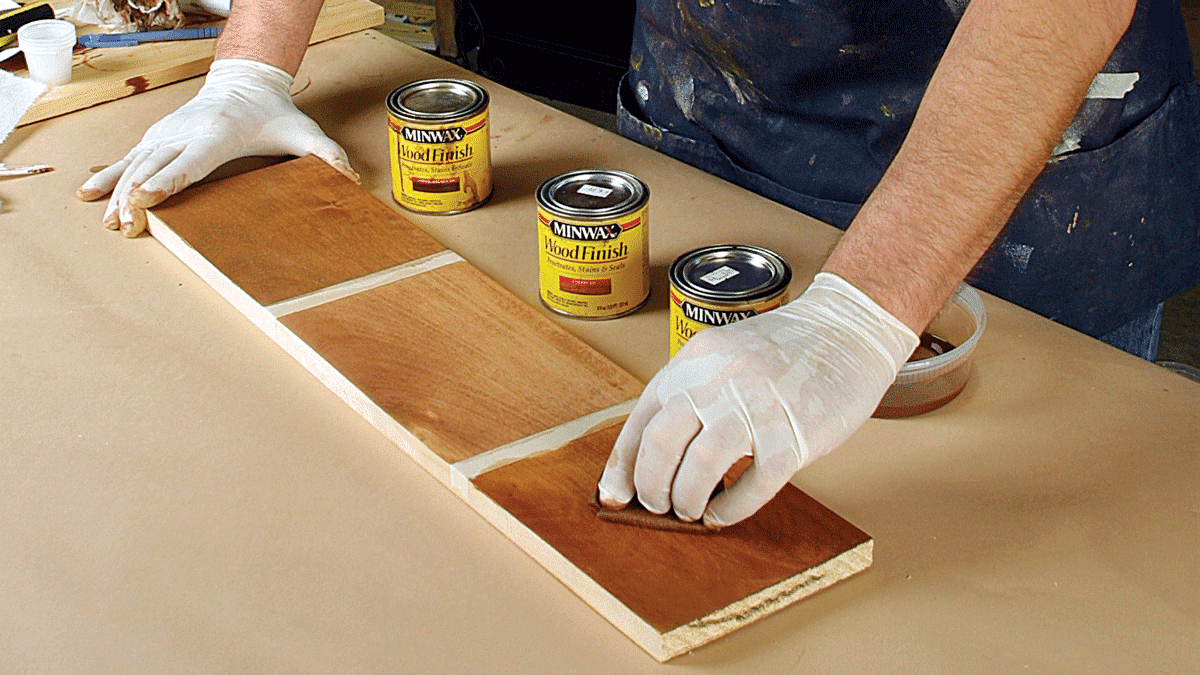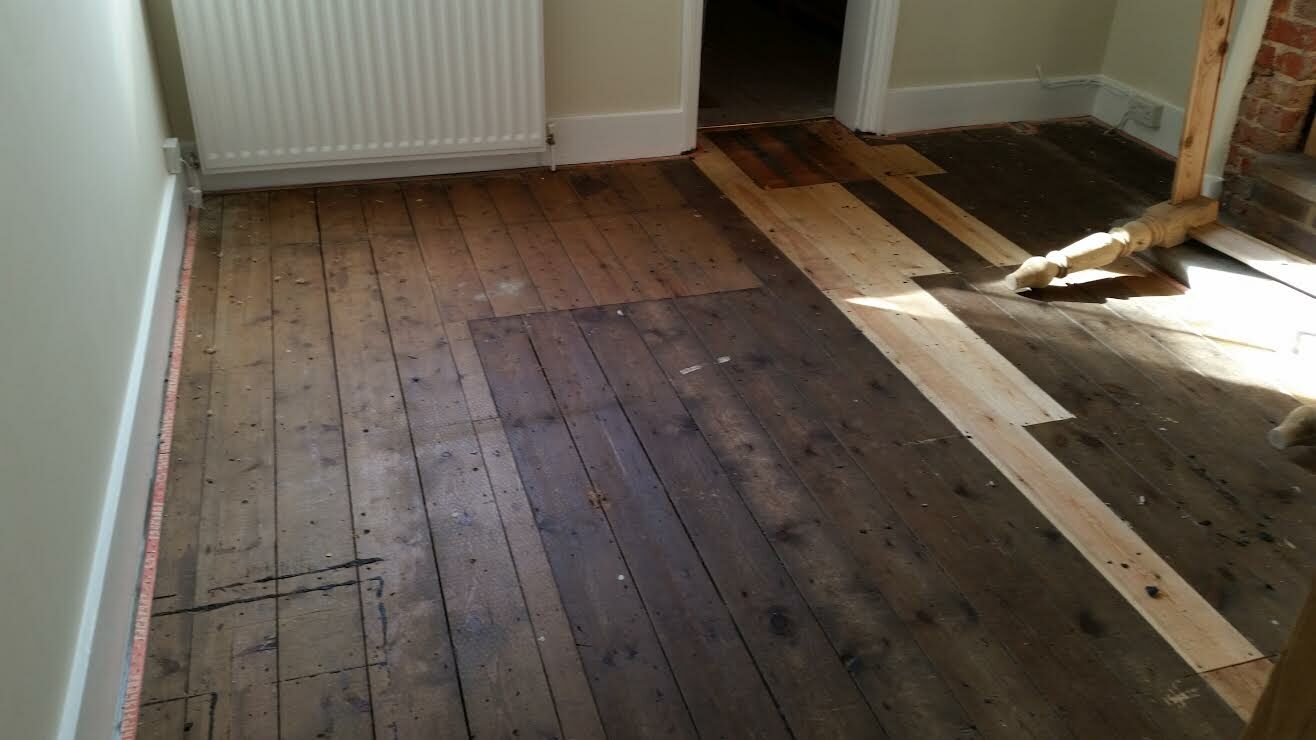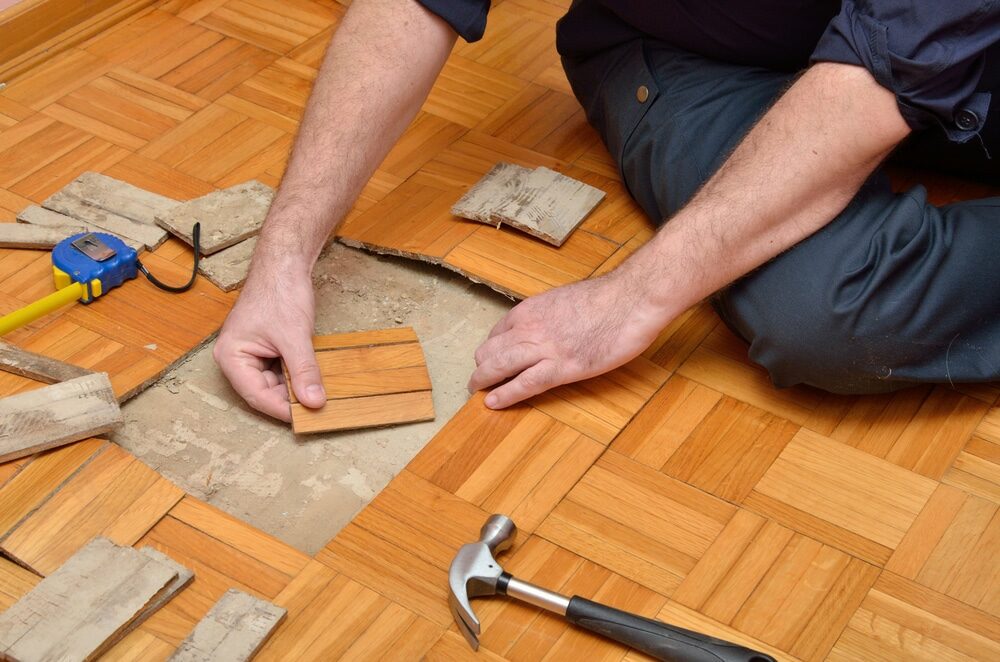London:
Nationwide:
Clean and Restore Your Wooden Floor After Carpet Lifting
Posted on April 10, 2023
Blog
Carpet lifting can be a daunting task, but revealing the beautiful wooden floor underneath can be well worth the effort. In this comprehensive 6000-word guide, we will delve into the steps to clean and restore your wooden floor after carpet lifting. Whether you’ve decided to remove the carpet to unveil the hidden charm of your home or are simply looking to spruce up an old wooden floor, this guide will help you achieve the desired result.
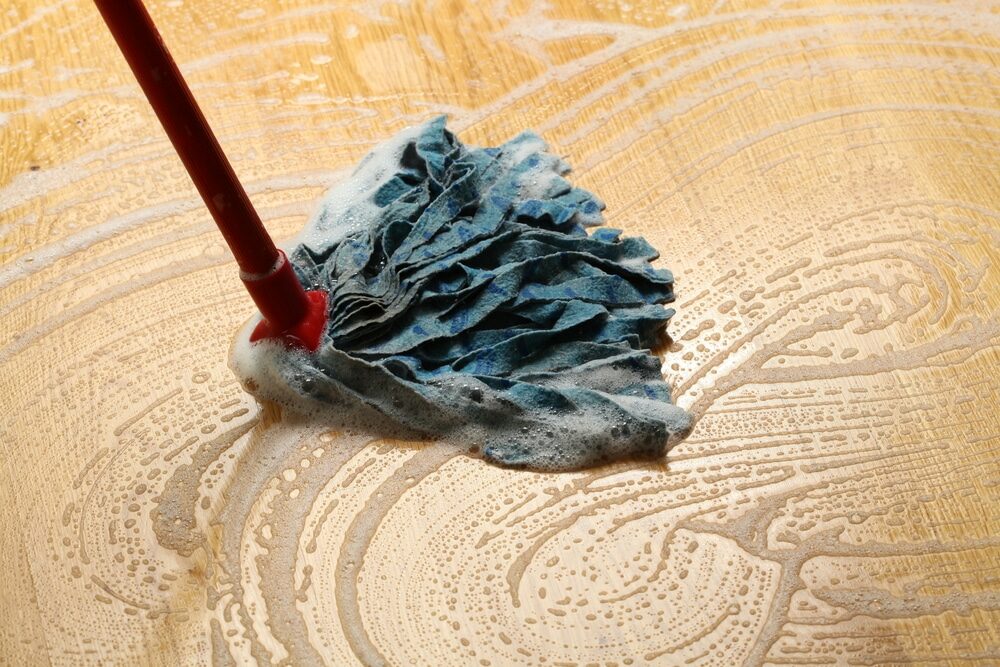
1. Before you begin the process of cleaning and restoring your wooden floor, it’s essential to assess its condition.
Here are some factors to consider:- Wood type: Determine the type of wood used in your flooring, as this will affect the restoration process. Common hardwoods include oak, maple, and walnut, while softwoods include pine, cedar, and spruce.
- Floor condition: Check for signs of damage, such as cracks, scratches, stains, or warped boards. This will help you determine the extent of the repair work needed.
- Thickness of the wood: Measure the thickness of the wooden boards to ensure they can withstand the sanding process. Generally, solid hardwoods should be at least 3/4 inch thick.
2. Removing carpet and tack strips
To begin the restoration process, you’ll need to remove the carpet and any tack strips or padding underneath. Here’s how to do it:- Start by cutting the carpet into manageable sections using a utility knife. This will make it easier to roll up and remove the carpet.
- After removing the carpet, you’ll find padding underneath. Use a scraper to remove any adhesive residue from the wooden floor.
- Tack strips are nailed along the perimeter of the room to secure the carpet. Use a pry bar and hammer to remove them carefully. Be sure to remove any nails or staples left behind as well.
3. Cleaning the Wooden Floor
Once you’ve removed the carpet and tack strips, it’s time to clean the wooden floor. Here’s a step-by-step guide:- Sweep or vacuum the floor to remove any loose debris.
- Use a scraper to remove any remaining adhesive residue, being careful not to damage the wood.
- Prepare a cleaning solution by mixing equal parts white vinegar and water. Dampen a microfiber mop or cloth with the solution and clean the floor, being sure not to saturate the wood.
- Allow the floor to dry completely before moving on to the next step.
4. Repairing Damaged Wooden Floors
After cleaning the floor, you’ll need to repair any damaged areas. Here’s how:- For minor scratches, use a wood filler or putty that matches the color of your floor. Apply the filler with a putty knife and allow it to dry before sanding.
- For larger cracks or gaps, use wood filler or epoxy to fill the area. Again, allow it to dry before sanding.
- If any boards are warped or badly damaged, you may need to replace them. Carefully remove the damaged board and replace it with a new one of the same thickness and wood type.
5. Sanding the Wooden Floor
Sanding wood floor is a critical step in the restoration process, as it removes the old finish and prepares the wood for staining and sealing. Here’s how to sand your wooden floor: Choose the right sandpaper grit for your floor. Start with a lower grit (40–60) for heavily worn or damaged floors and a higher grit (80–100) for floors in better condition.- Rent a floor sander from a local equipment rental store. Follow the manufacturer’s instructions for proper use and safety precautions.
- Begin sanding in one corner of the room and work your way across the floor, going with the grain of the wood. Keep the sander moving to avoid creating uneven spots or gouges.
- After completing the first pass, switch to a higher grit sandpaper (100–120) and repeat the process. This will remove any remaining imperfections and smooth out the wood.
- Finally, use an edge sander to reach any areas the floor sander couldn’t. Be sure to use the same grit progression as you did with the floor sander.
- Vacuum or sweep up the dust generated by sanding. You may also want to use a tack cloth to ensure the floor is completely dust-free before moving on to the next step.
6. Staining and finishing the wooden floor
Now that your floor is sanded and cleaned, it’s time to apply the stain and finish. Here’s how:- Choose a wood stain that complements your desired look and the overall decor of your home. Apply the stain with a brush or a clean cloth, following the grain of the wood. Allow the stain to soak in for the recommended time (usually 2–5 minutes) before wiping away any excess with a clean cloth.
- Allow the stain to dry completely, which can take anywhere from a 45min to few hours, depending on the specific product used and environmental conditions.
- Apply a wood finish to seal (oil, lacquer or hardwax) and protect your newly stained floor. Lacquer is a popular choice, as it provides a durable and long-lasting finish. You can choose between water-based and oil-based polyurethane, each with its own advantages and disadvantages.
- Apply the finish with a brush, roller or a lambswool applicator, following the grain of the wood. Allow the first coat to dry completely (typically 1-4 hours), then lightly sand/buff the floor with a fine-grit sandpaper (220–240) to ensure proper adhesion of the second coat.
- Repeat the process for the second coat of finish, and a third if necessary, allowing ample drying time between each coat.
- Allow the final coat to dry for at least 24 hours (or longer, depending on the manufacturer’s recommendations) before moving furniture back into the room.
7. Maintenance and Care for Your Restored Wooden Floor
Once your wooden floor has been cleaned, repaired, sanded, stained, and sealed, it’s important to maintain its beauty and longevity with proper care. Here are some tips:- Sweep or vacuum the floor regularly to remove dirt and debris, which can scratch the wood over time.
- Place protective pads on the bottom of furniture legs to prevent scratches and dents.
- Use area rugs or mats in high-traffic areas to protect the wood and reduce wear.
- Avoid using harsh chemicals or abrasive cleaners on the wood floor, as these can damage the finish. Instead, use a damp microfiber mop or cloth and a gentle, pH-neutral cleaner specifically designed for hardwood floors.
- Keep your home’s humidity levels between 40 and 60 percent to prevent the wood from expanding and contracting, which can cause warping or cracking.
- Refinish your wood floor as needed (every 5–10 years) to maintain its beauty and prolong its lifespan.
Remove the dirt on wooden floor with a soft broom or cylinder vacuum cleaner with brush nozzle
Wooden floors are not only beautiful but also durable and long-lasting. However, keeping them clean and well-maintained is essential to preserving their natural charm and longevity. Regularly removing dirt and debris from your wooden floors can prevent scratches, wear, and damage. In this article, we will compare two popular methods for cleaning wooden floors: using a soft broom and using a cylinder vacuum cleaner with a brush nozzle attachment. By understanding the pros and cons of each method, you can make an informed decision on the best way to keep your wooden floors clean and looking their best.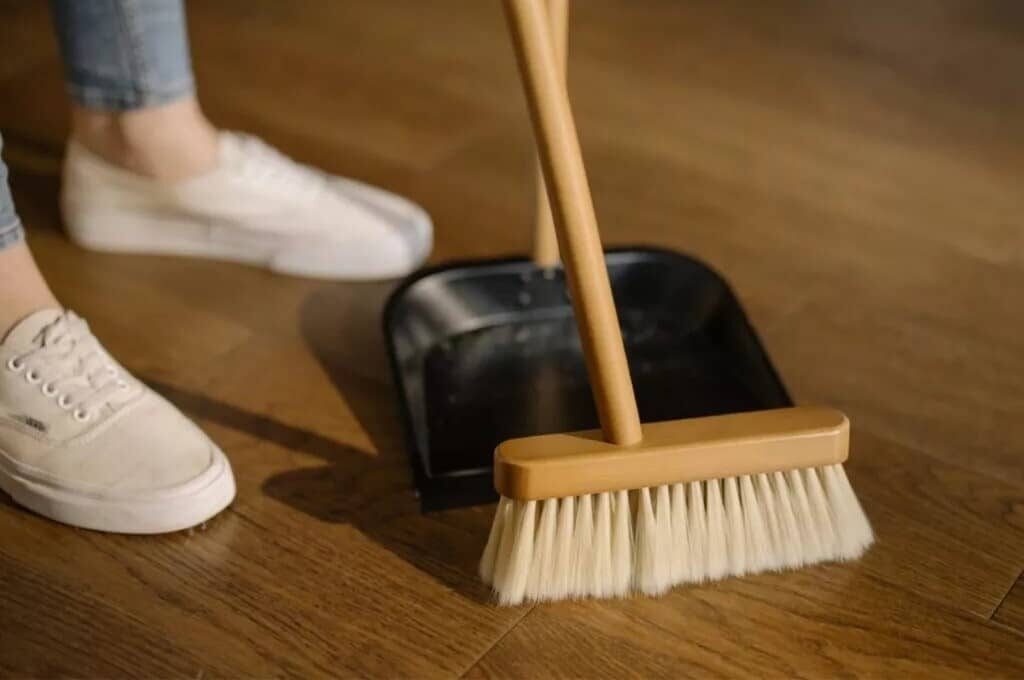
Soft Broom: Pros and Cons
Pros:- Gentle on wood: Soft brooms have softer bristles that are less likely to scratch or damage your wooden floors compared to traditional stiff-bristled brooms.
- Lightweight and easy to manoeuvre: Soft brooms are generally lightweight, making them easy to handle and manoeuvre, particularly in tight spaces or around furniture.
- Cost-effective: Soft brooms are relatively inexpensive, making them an affordable option for most homeowners.
- Less effective at removing fine dust: soft brooms may not pick up fine dust particles as efficiently as a vacuum cleaner.
- Can cause dust and allergens to become airborne: Sweeping with a broom can cause dust and allergens to become airborne, potentially exacerbating allergy symptoms.
Cylinder Vacuum Cleaner with Brush Nozzle: Pros and Cons
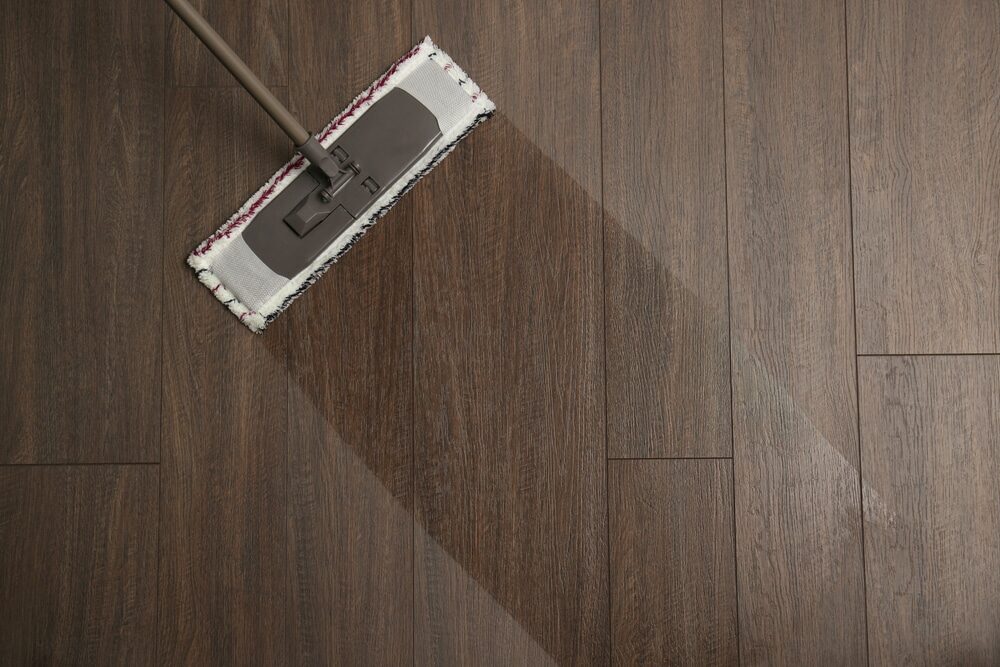 Pros:
Pros:
- More effective at removing dirt and debris: Cylinder vacuum cleaners with brush nozzle attachments are designed to efficiently remove dirt, dust, and debris from various types of flooring, including wooden floors.
- Minimises airborne dust and allergens: Vacuum cleaners with HEPA filters can trap and contain dust and allergens, preventing them from becoming airborne and reducing allergy symptoms.
- Versatility: Cylinder vacuum cleaners often come with multiple attachments, making them versatile tools for cleaning various surfaces and hard-to-reach areas.
- Adjustable suction: Many cylinder vacuum cleaners have adjustable suction settings, allowing you to use the appropriate level of suction for your wooden floors to prevent damage.
- More expensive: Cylinder vacuum cleaners with brush nozzles are generally more expensive than soft brooms.
- Requires electricity: Vacuum cleaners require electricity to operate, making them less eco-friendly and potentially limiting their use in areas without power outlets.
- Heavier and bulkier: Vacuum cleaners are generally heavier and bulkier than brooms, making them more challenging to manoeuvre and store.
Some Useful Links:
Conclusion
Both soft brooms and cylinder vacuum cleaners with brush nozzles have their advantages and disadvantages when it comes to cleaning wooden floors. Soft brooms are gentle on wood, lightweight, and cost-effective, making them a popular choice for many homeowners. However, they may be less effective at removing fine dust particles and can cause dust and allergens to become airborne. On the other hand, cylinder vacuum cleaners with brush nozzles are more effective at removing dirt and debris, minimising airborne dust and allergens, and offering greater versatility. However, they are more expensive, require electricity, and can be heavier and bulkier compared to soft brooms. Ultimately, the choice between a soft broom and a cylinder vacuum cleaner with a brush nozzle depends on your personal preferences, budget, and cleaning needs. By considering the pros and cons of each option, you can determine the best method to keep your wooden floors clean and well-maintained, ensuring their lasting beauty and durability.More from our Blog:
Preparation for sanding wooden floors Efficiently Remove Carpet Grippers from Wooden Floors How to Remove Stains and Marks from Wooden Floors ?
Sanding
We provide virtually dust-free sanding with our continuous belt machinery with mobile extraction units, giving you a safer environment for your family.
Oiling
This organic finish not only adds beauty to your home but also has exceptional water-repellent characteristics, making it easier to clean and maintain.
Waxing
This natural floor finish offers the softest and most mellow appearance – and leaves your floor able to breath.
Buffing
Using soft buffing machines (and hand-polishing where required) will bring a wonderful sheen to your newly-finished floor.
Repairs
We offer a full assessment of your wooden floors to determine what repairs are needed to provide the perfect working surface for the later stages of sanding, staining and sealing.
Restoration
We offer a comprehensive restoration process designed to address floors that are improperly fitted or damaged over time through wear and tear.
Request a fixed price quote for your wood floor restoration now
Simply enter your postcode below to get started.
Services
Wood Floor Sanding Wood Floor Restoration Wood Floor Scratch Repair Squeaky Wood Floor Repair Parquet Floor Sanding Parquet Floor Restoration Commercial Floor Sanding Church Floor Sanding Community Centre Floor Sanding School Floor Sanding Gap Filling Gap Filling with ResinCopyright © Mr Sander®
Privacy & Cookies Terms & Conditions Complaints Procedure Cancellation Rights Sitemap